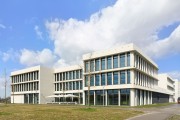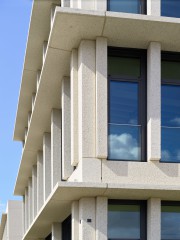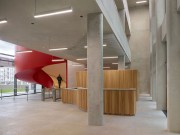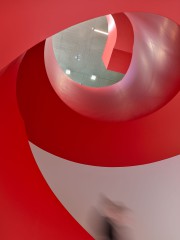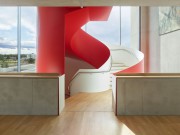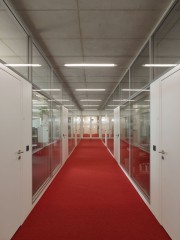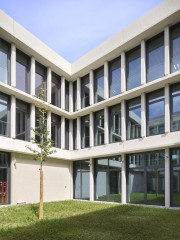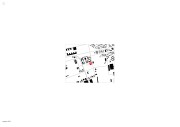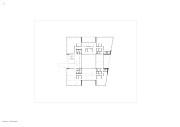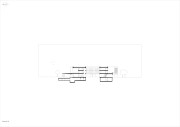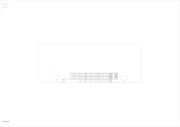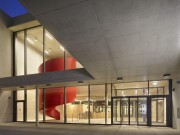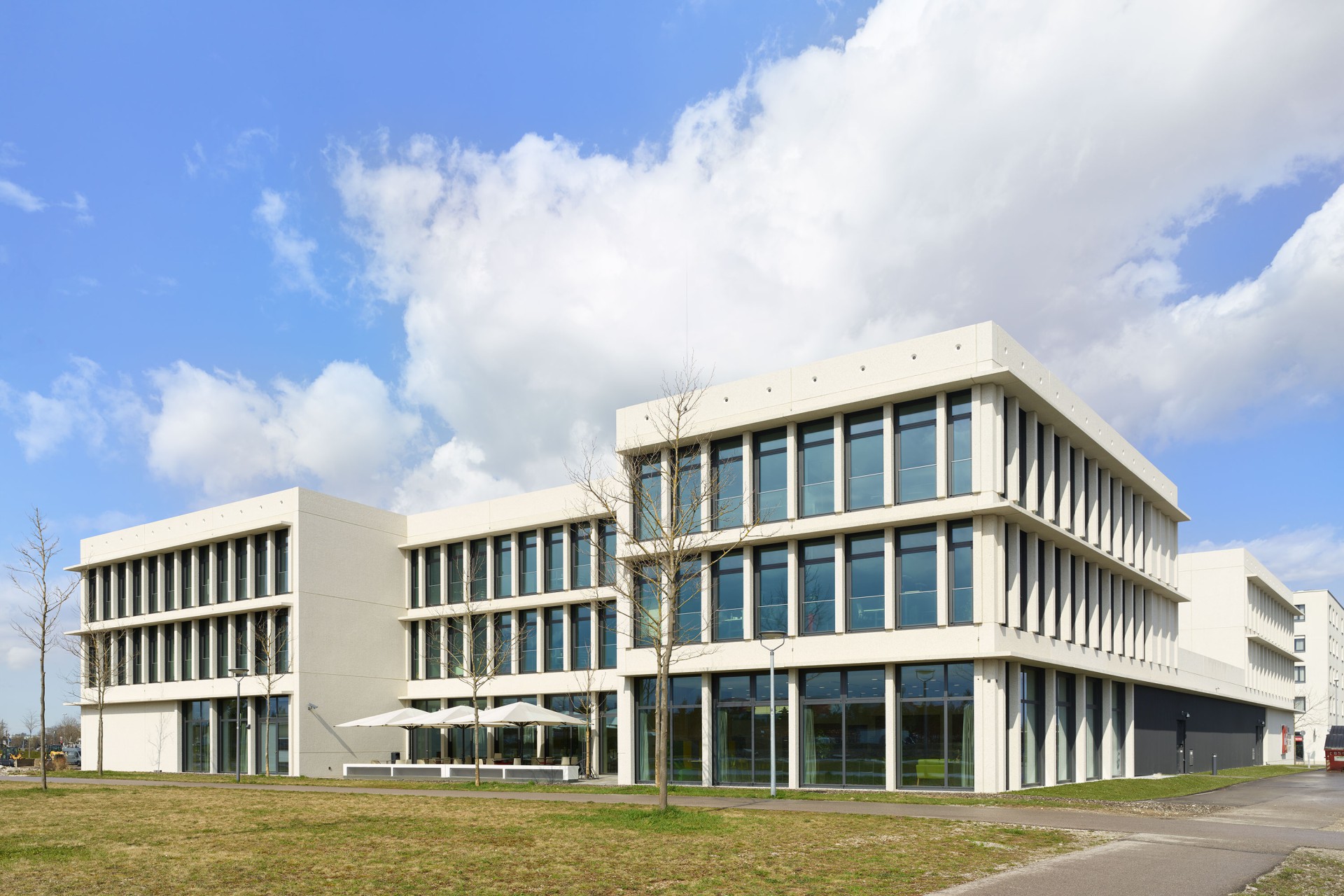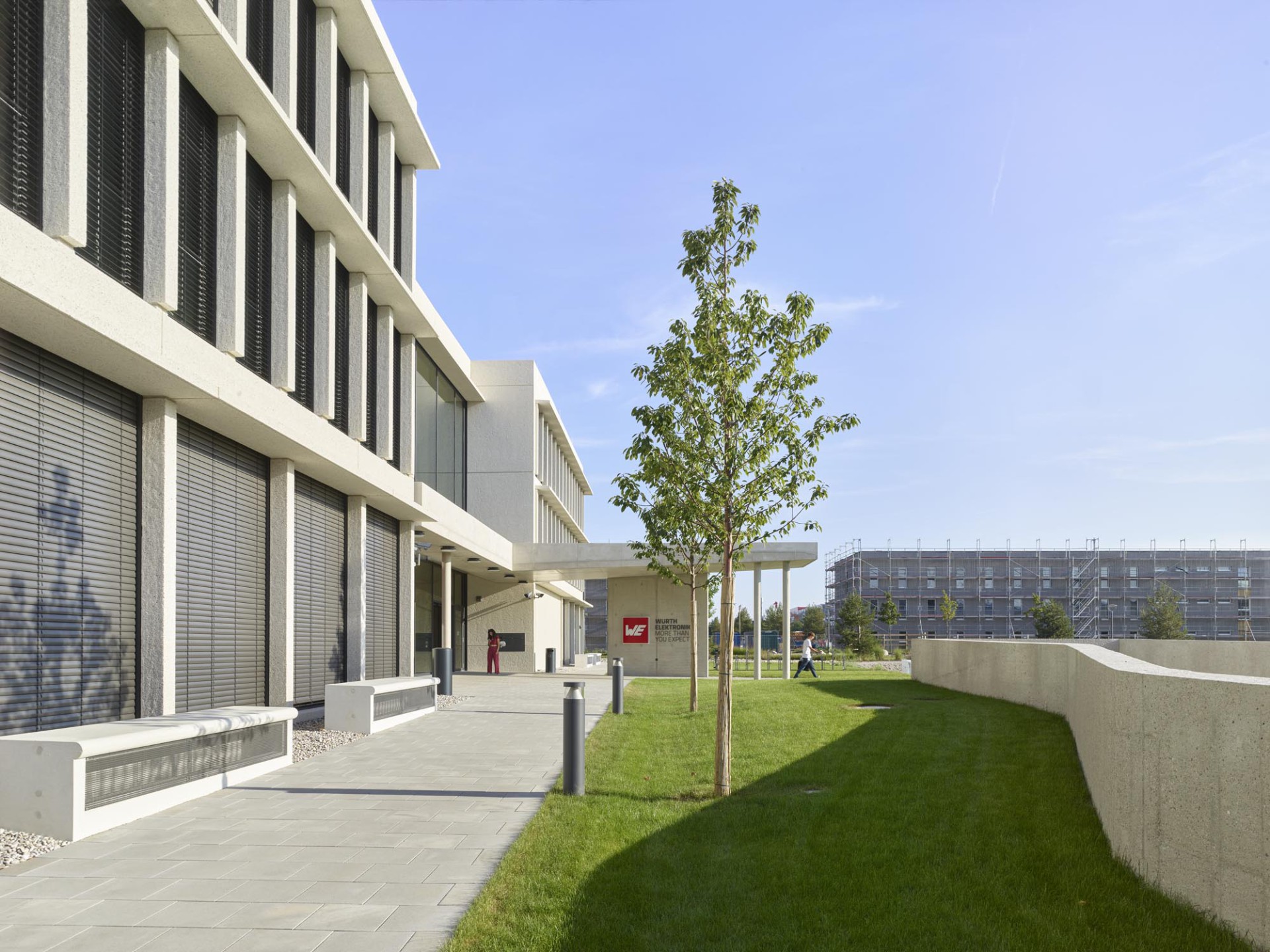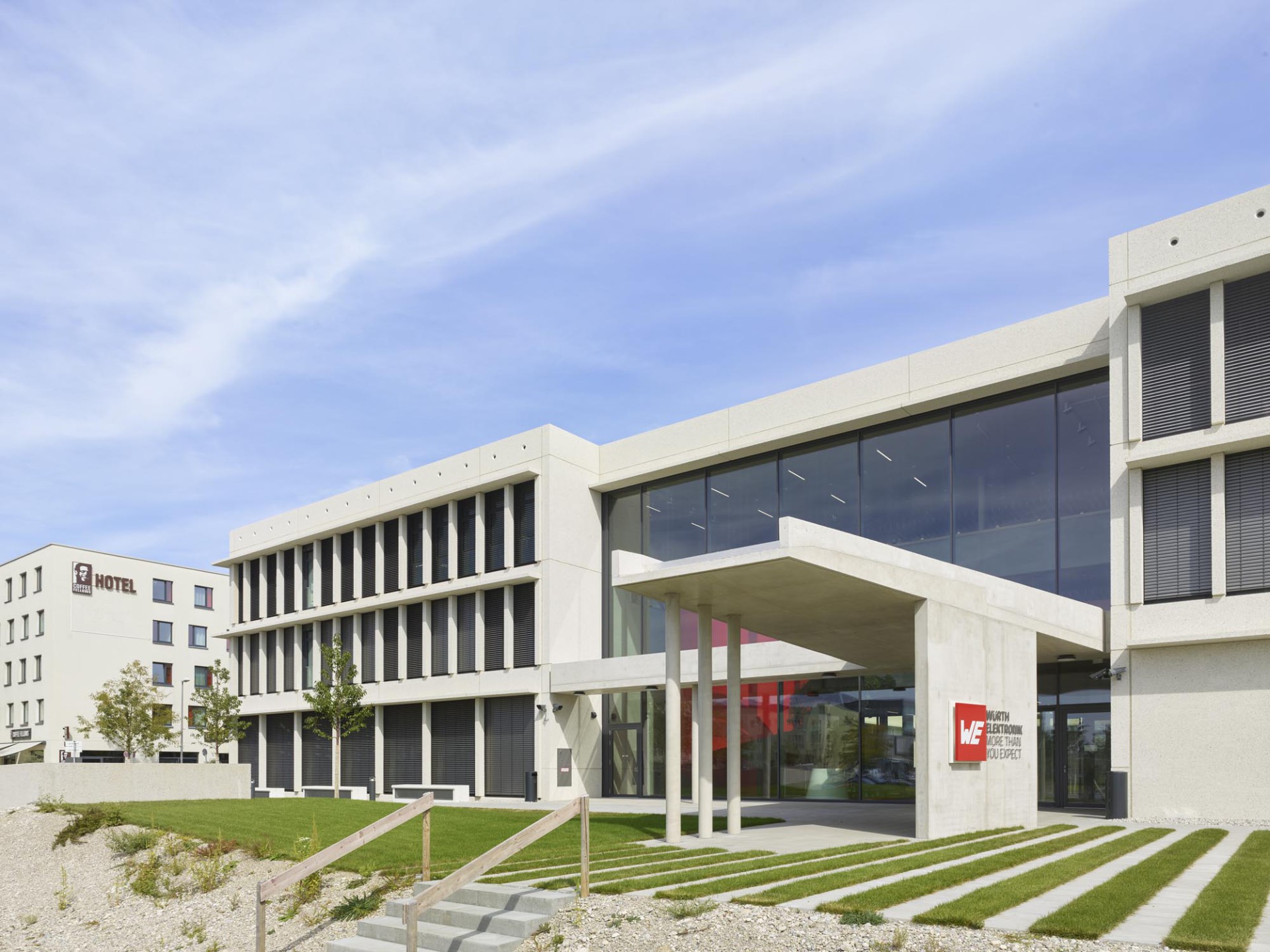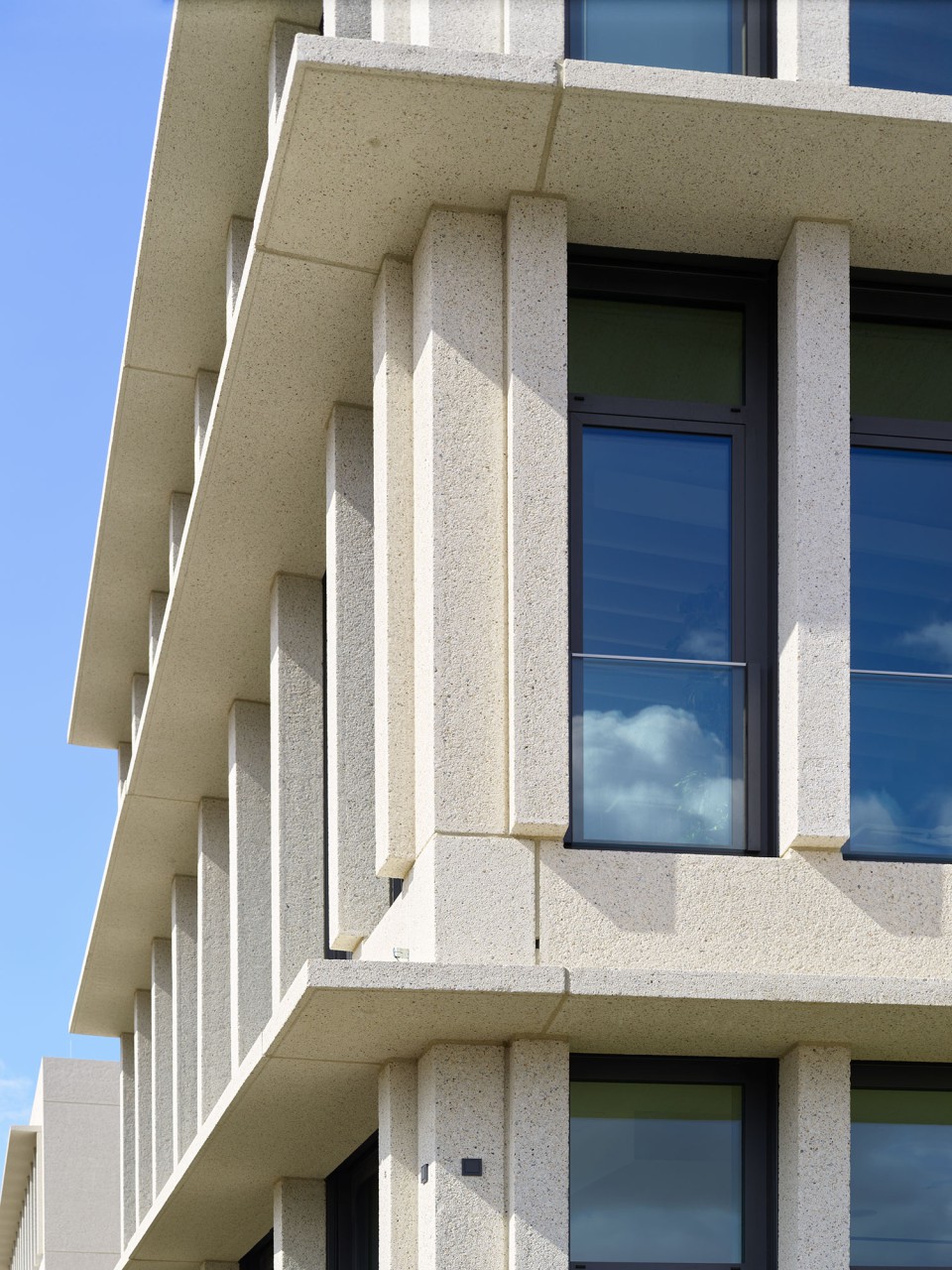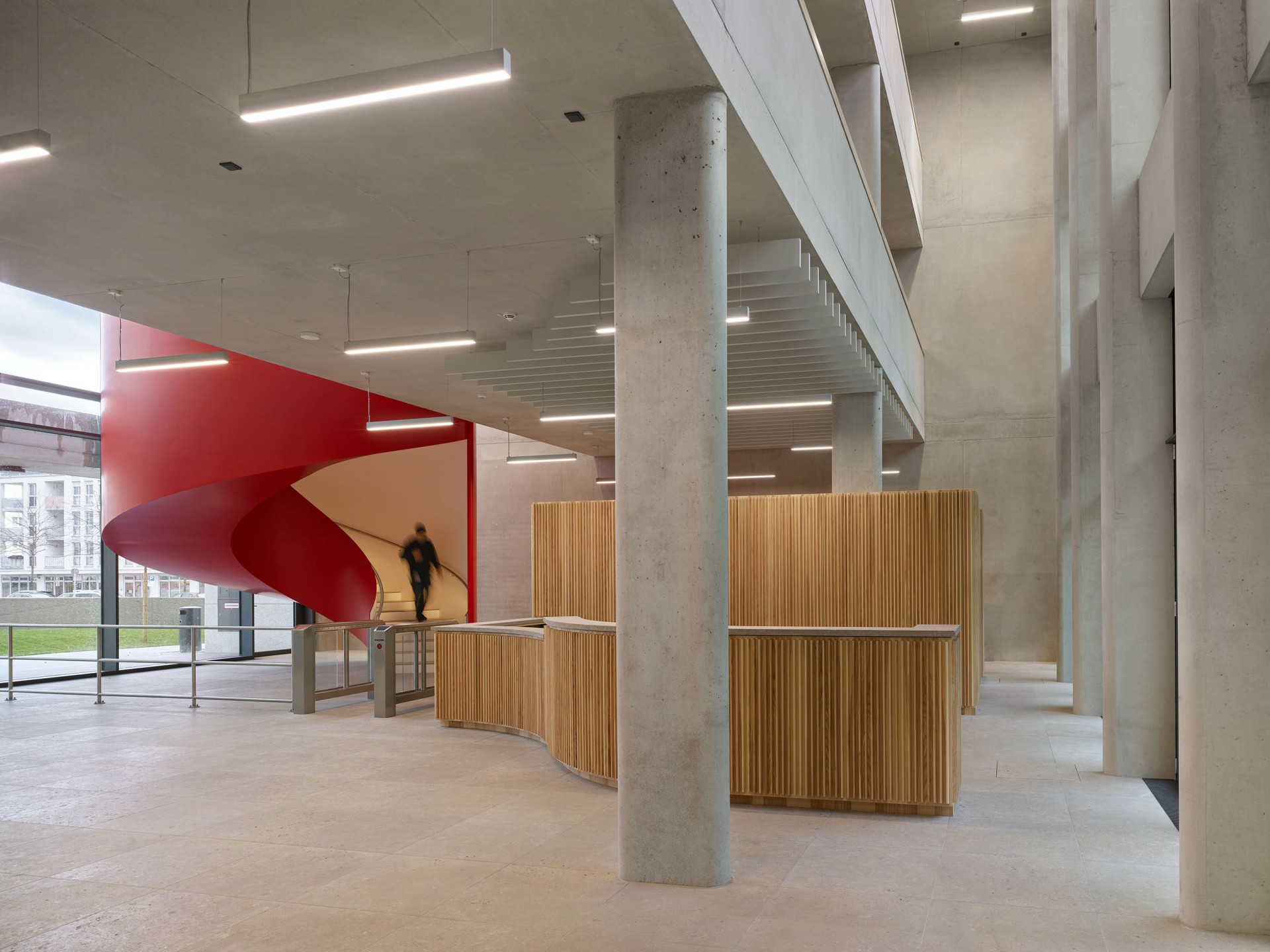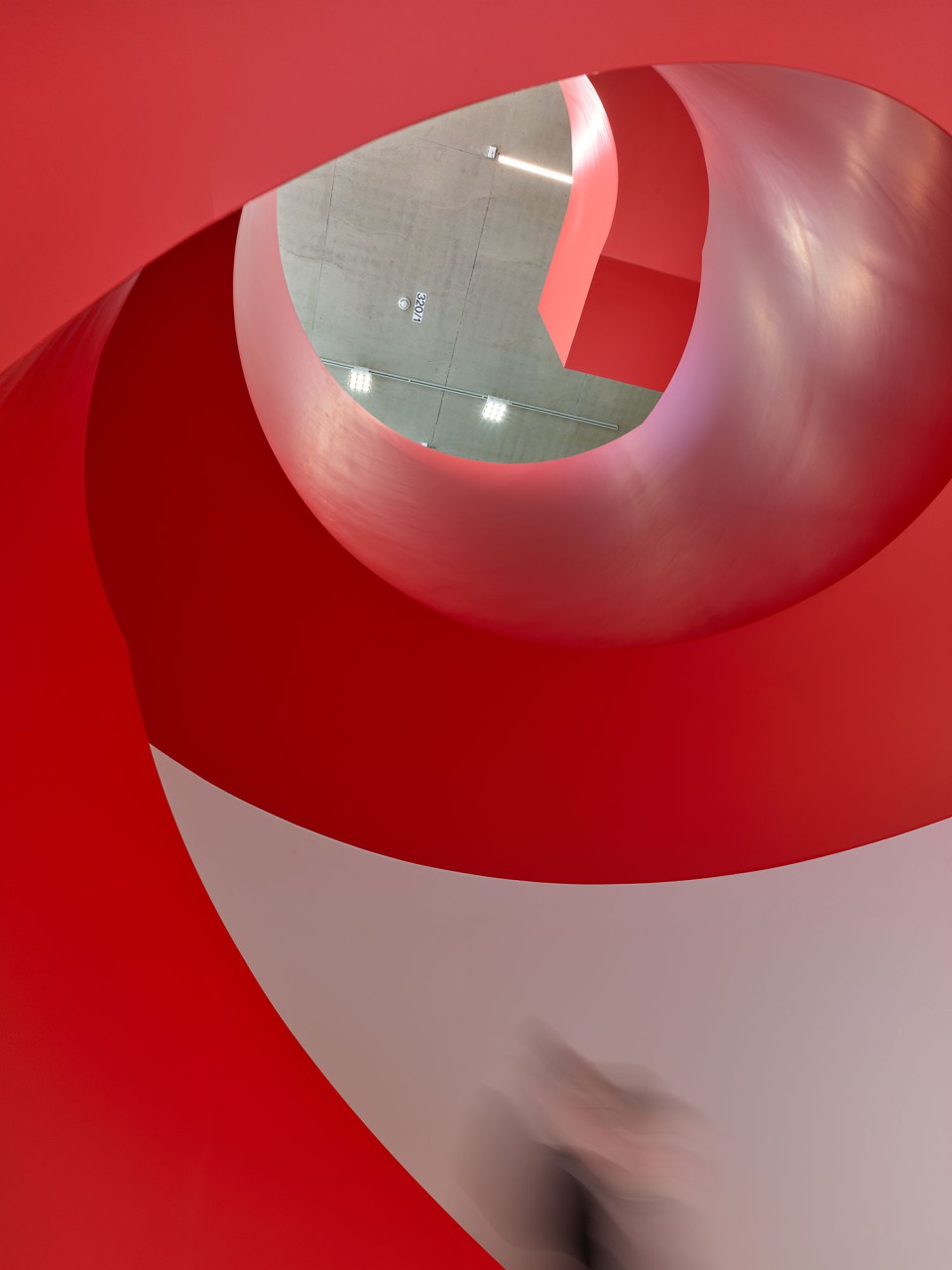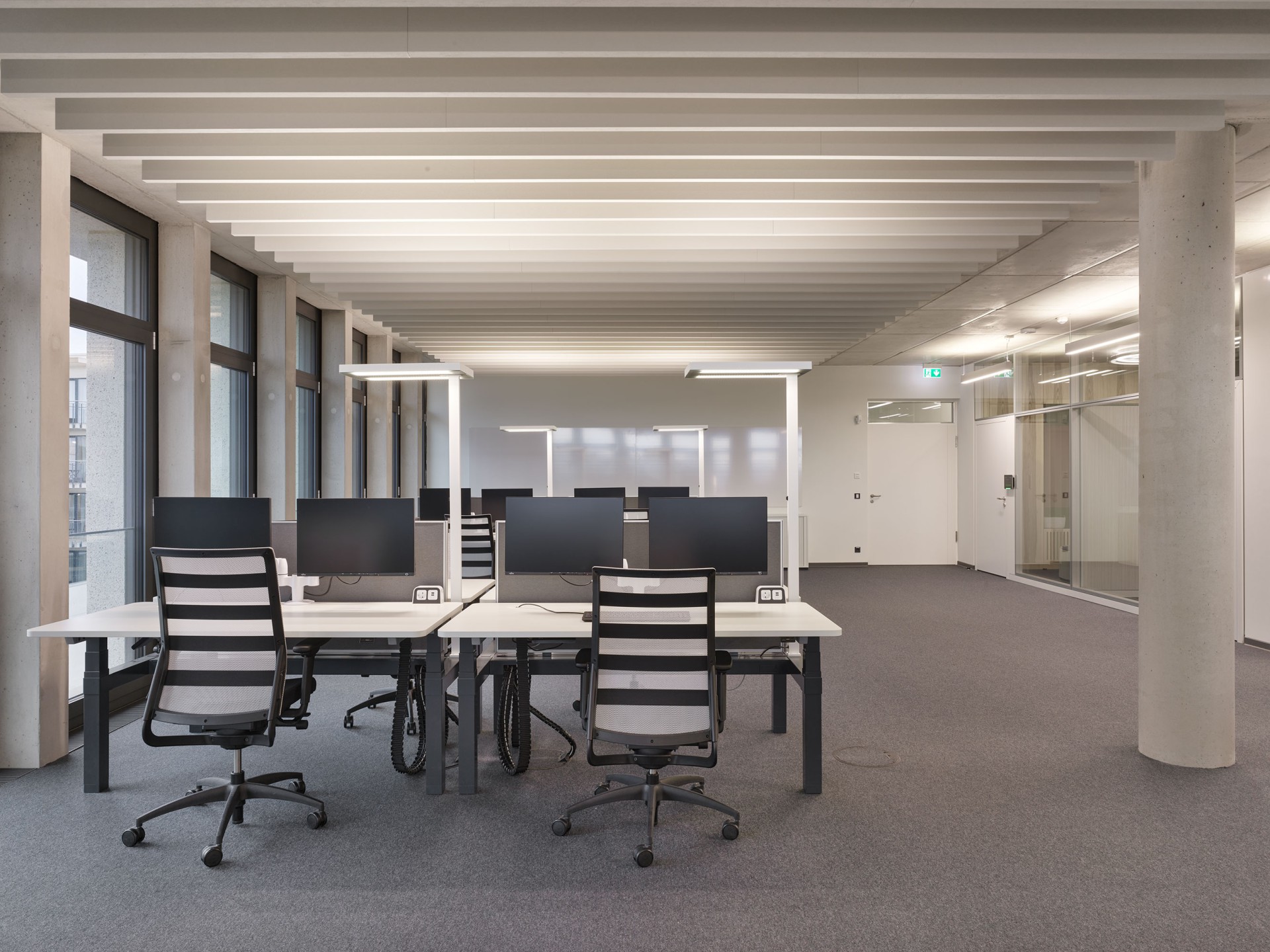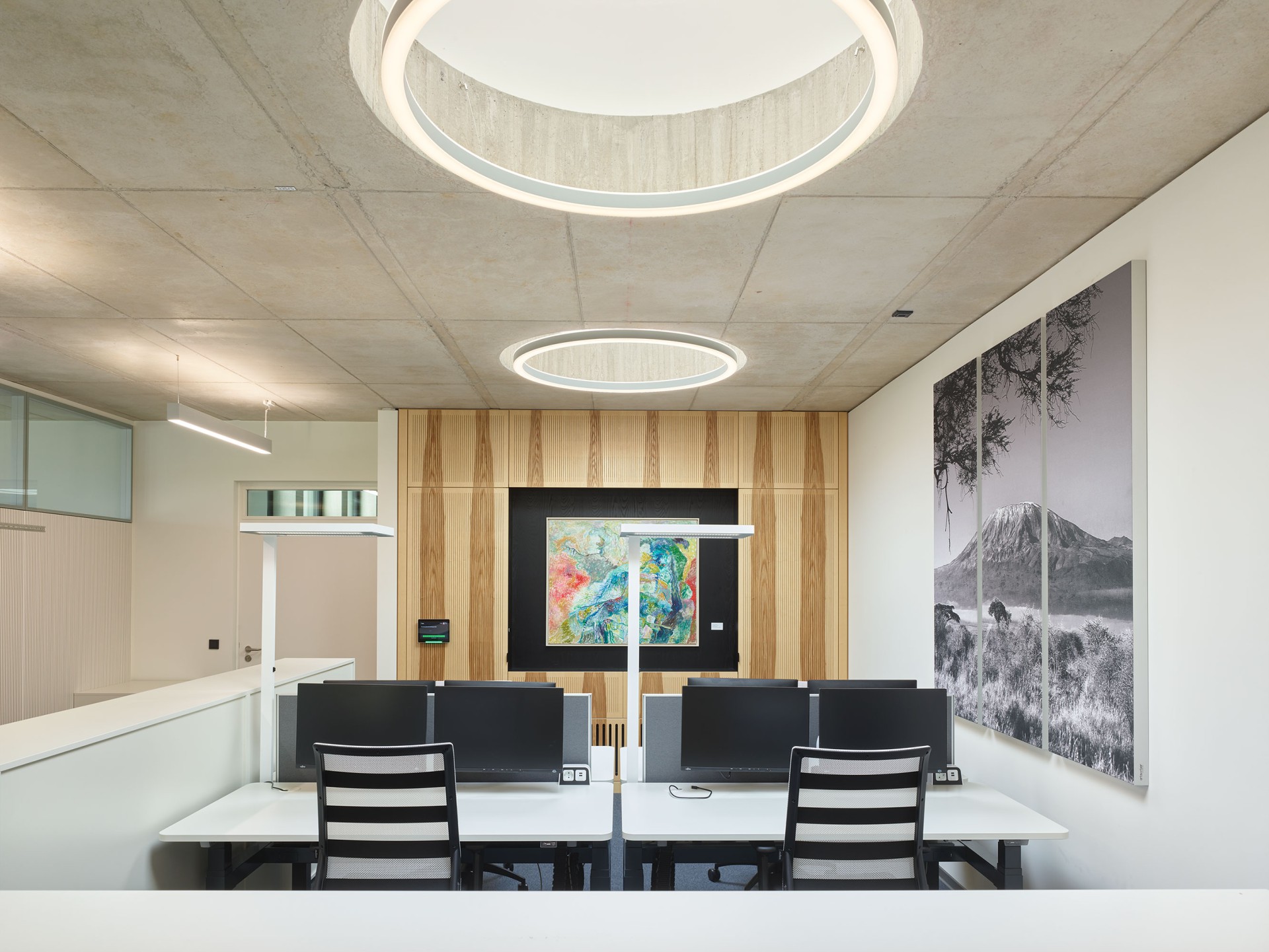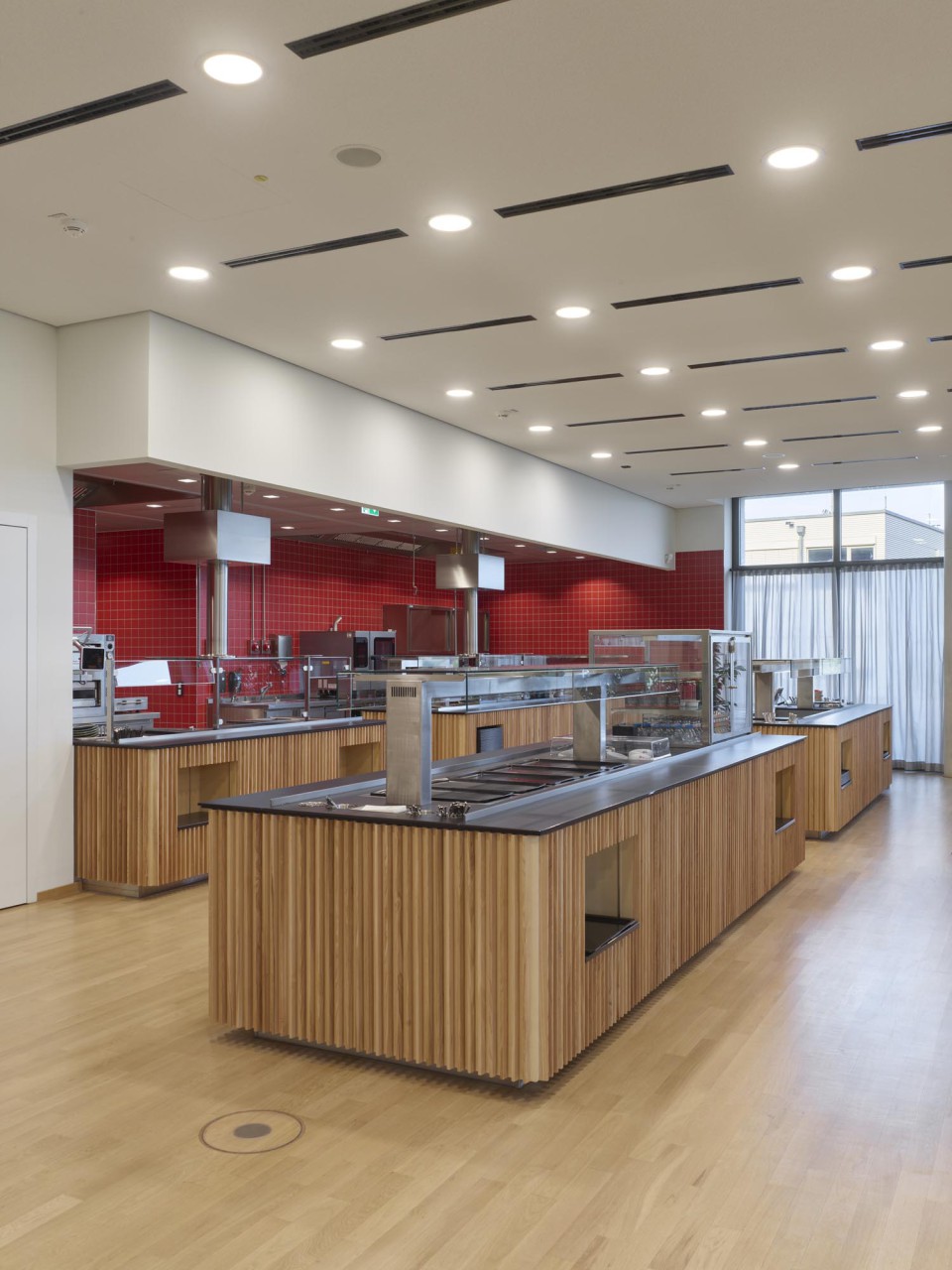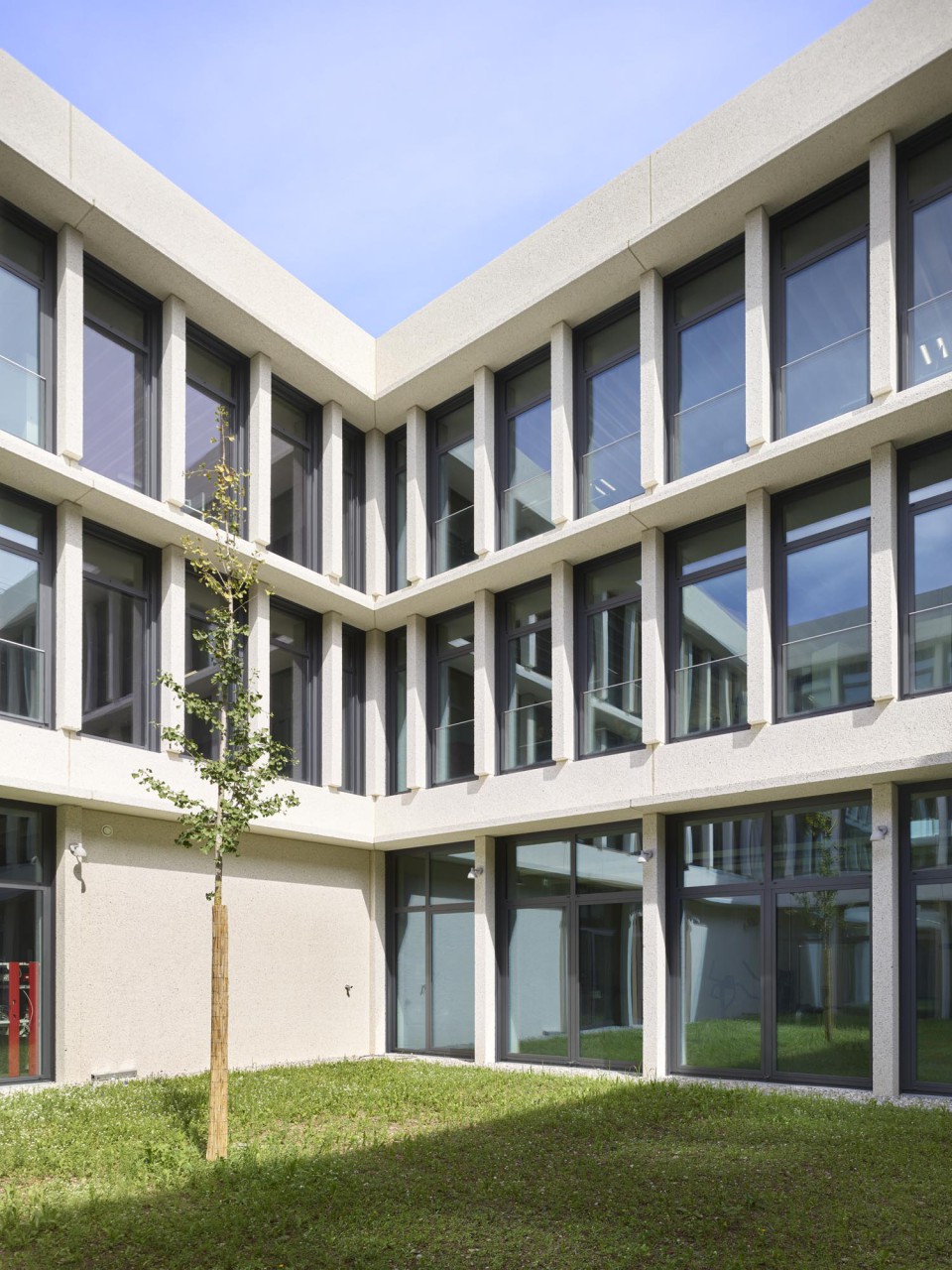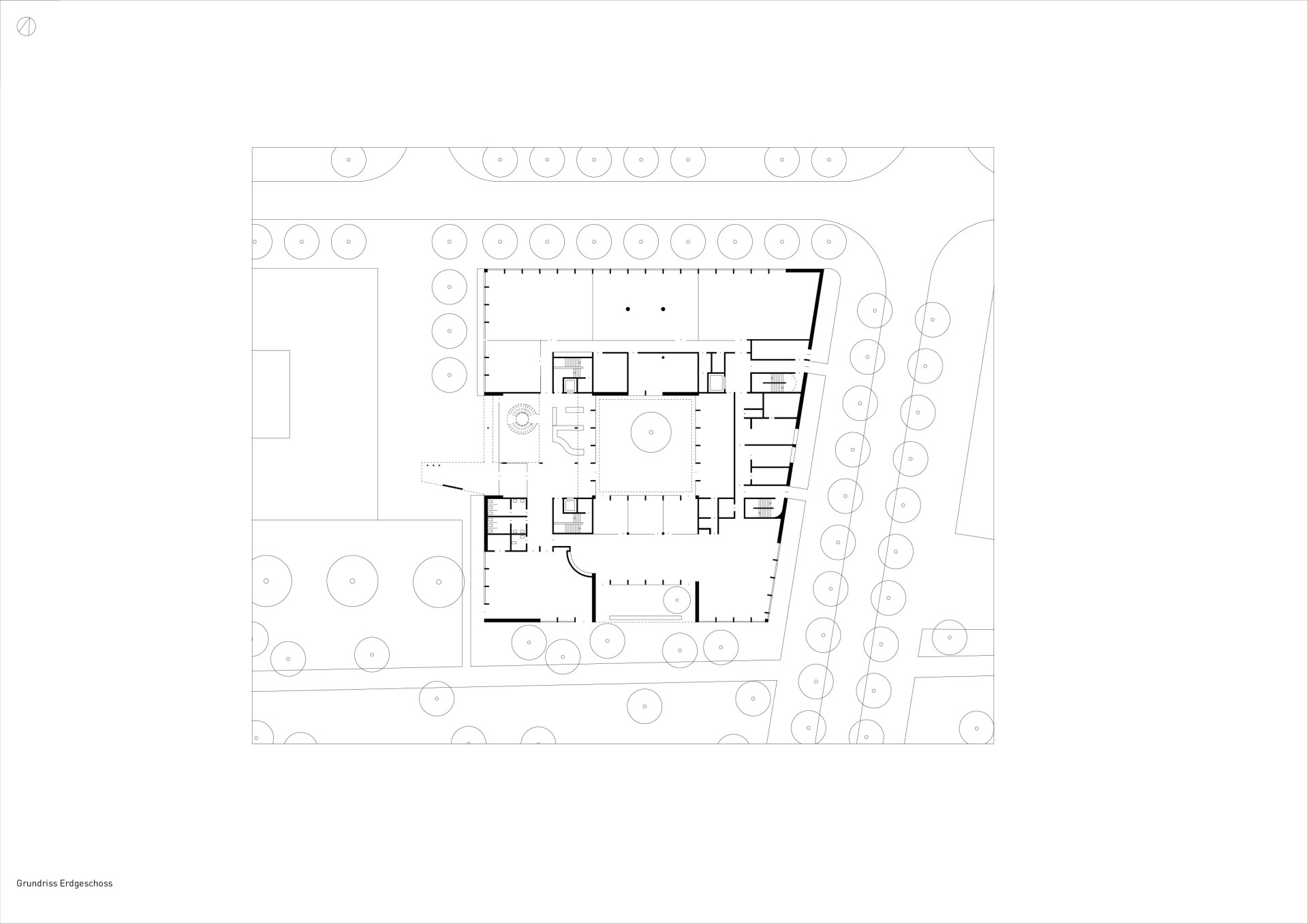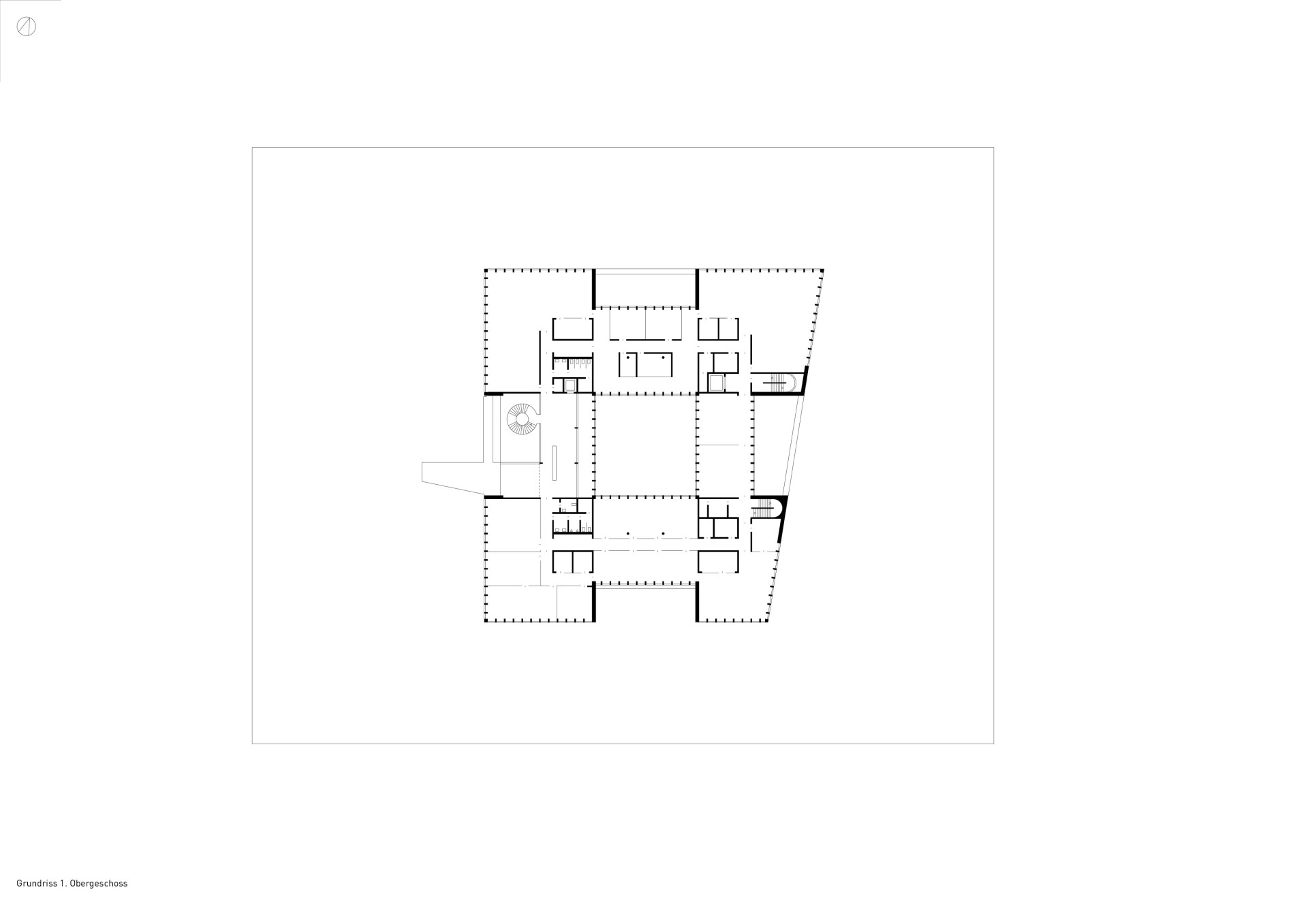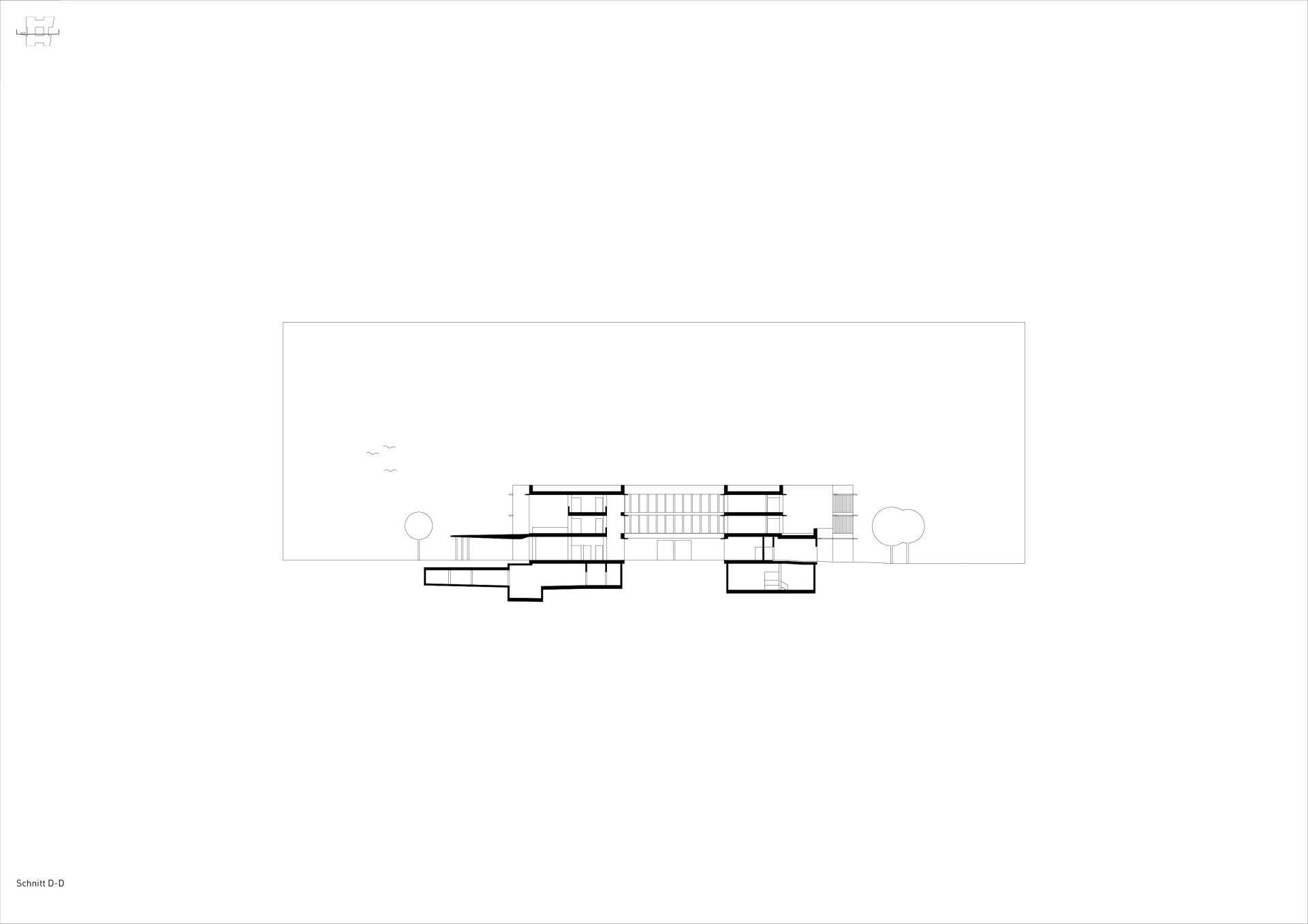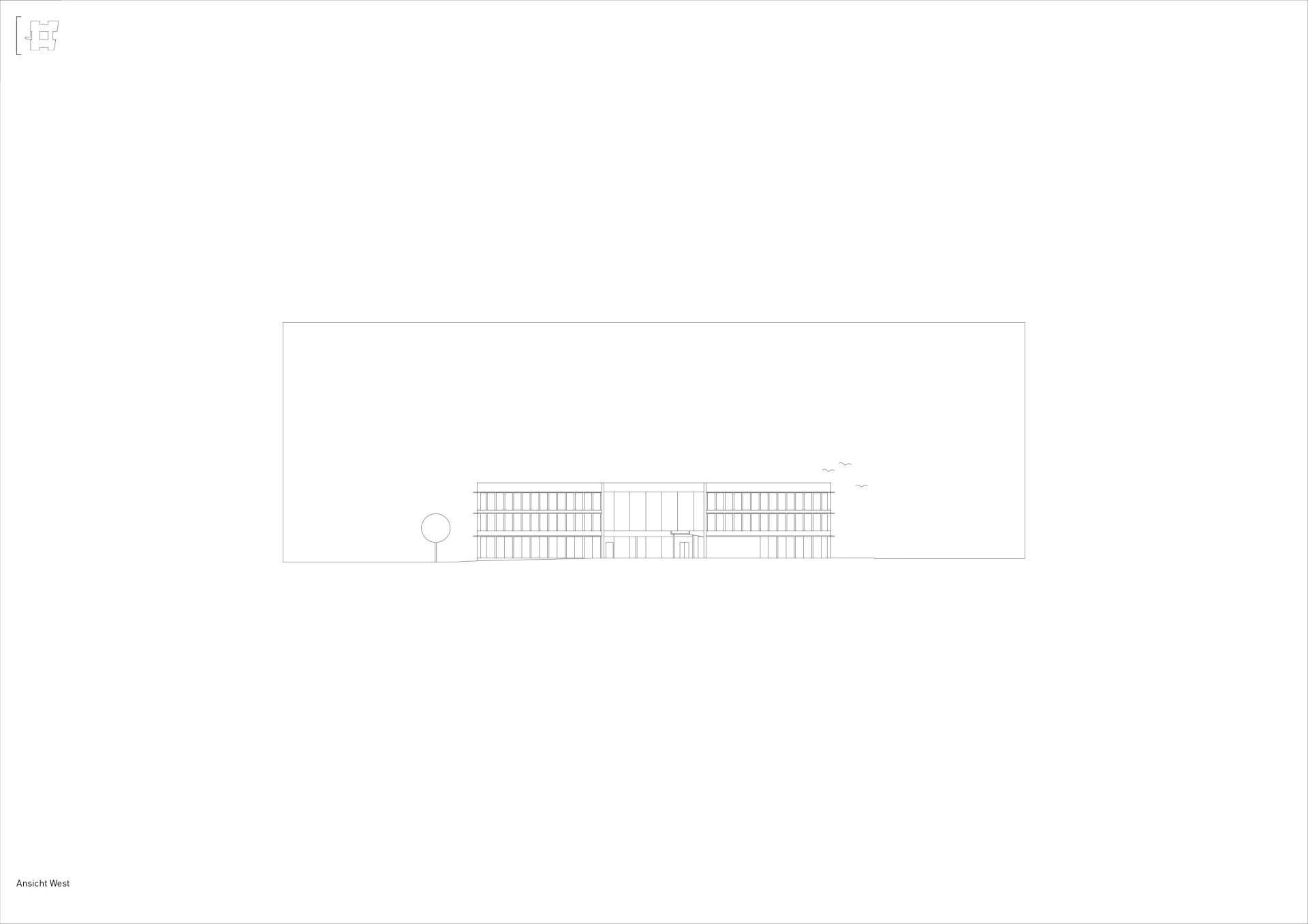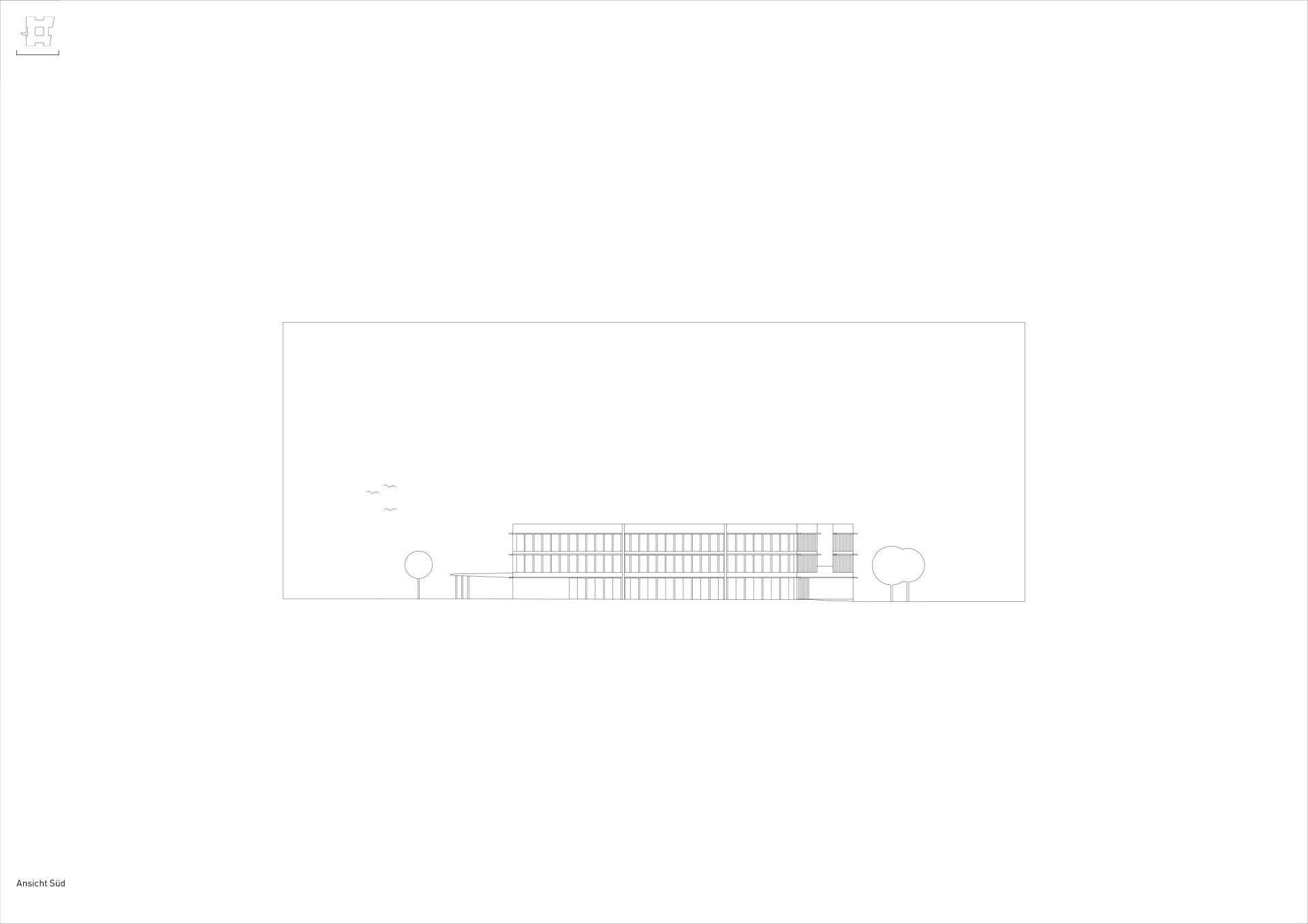High-Tech Innovation Center Munich
All sorts of items manufactured by Würth have already been put to use in our buildings. With the design for the High-Tech Innovation Center, we now have the opportunity to be of service to the company. The building in Munich’s Freiham district accommodates laboratories, workshops and offices for the product development of innovative and custom-designed electronic and electromechanical components.
In order to implement the programme within the tight framework of the detailed local development plan and so as not to exceed the maximum permissible use of the site, we designed a compact two-storey cuboid from which portions are carved out. These recesses are in the middle of each façade, thus allowing the overall building to retain its character as a clearly positioned urban element and giving the site a face on all sides. The recesses at different levels create spatially framed terraces that fulfil the desire for differentiated outdoor spaces for the building’s staff and guests.
The plot across from the main entrance to the building on its west side is designated for a second phase of construction. This allows for the creation of an attractive forecourt bordered by both buildings, which will be the company’s ‘calling card’, inviting visitors to linger and offering space for receptions. The canopy, which projects out far beyond the entrance, will also serve to support a bridge that will provide the internal link across to the second phase of construction.
The ground-level terrace facing south serves as an outdoor seating area for the staff canteen and presents a highly inviting atmosphere thanks to the directly adjacent public green space. At the centre of the building is a square inner courtyard in the form of a verdant garden space, onto which the lobby and the restaurant and adjoining fitness room generously open up.
The light-coloured precast façade elements made of bush-hammered white concrete are set in front of the actual load-bearing structure. The framework of closely spaced columns and projecting spandrel elements bestows depth and tectonic form to the façade. The rectangular column cross-section creates deep reveal areas at the windows. Thus, the façade appears closed when seen moving along the adjacent streets, whereas it opens up with generously dimensioned individual windows when viewed straight on.
With expansive glazing to the forecourt, the open lobby extends up to the top floor, revealing the exposed concrete surfaces of the building’s structure. The red-lacquered, spiral main staircase, with its closed stringers, forms a space of its own within the spacious lobby.
The sophisticated laboratory and test chambers of the testing area for the electronic components comprise about a quarter of the total area and adjoin the lobby on its north side at the ground floor and lower level. At the prominent southwestern corner between the lobby and the staff canteen is the auditorium, which has a movable partition that enables it to be divided into two halls of equal size.
On the upper floors, the various departments of development, administration and sales adjoin both sides of the lobby. All areas can be flexibly subdivided within the building grid defined by the façade. Again at the southwest, the conference area on the second upper floor has meeting rooms of various sizes, offering views across the adjacent green spaces and all the way to the Alps.
The base temperature of the building is controlled by concrete core activation of the predominantly exposed concrete ceilings, reducing the demands on the technical systems. By pre-tensioning the reinforcement, it was possible to build thin reinforced concrete slabs with a large span width, thus allowing the interior spaces to be variably subdivided by dispensing with internal columns. Heating and cooling is provided by heat exchangers in the groundwater. Using the windows for natural ventilation of the work spaces made it possible to forgo a complex ventilation system.
For the interiors, we have chosen robust and repairable natural building materials of high durability. The floor coverings in the public areas consist of wear-resistant natural stone or solid parquet. Carpeting is installed in the offices. The acoustically necessary wall panelling and the built-in wooden furniture we designed are all made of common ash. The cladding with solid wood mouldings improves the room acoustics, is less sensitive than veneered surfaces and is pleasant to the touch.
The spatial partitioning of the administrative levels and the furnishing of the building were carried out by an interior designer to suit the requirements of the departments. This shows how flexibly the building structure can respond to the different needs of its users. That is important because, for us, the essential aspect in considering a building’s life cycle is durability. This concerns not just the choice of materials but also the versatility of the building structure and, in particular, an architectural quality that is positively perceived over the long term.
client:
Würth Immobilien Ges. m. b. H.
project steering:
Adolf Würth GmbH & Co. KG
architects:
LRO Lederer Ragnarsdóttir Oei, Stuttgart
collaborators:
David Fornol, Maximilian Löffler, Julius Bentele, Philipp Lülsdorf, Beatrice Pilgrim, Richard Scheele, Johannes Brambring, Levin Koch
structural engineering:
Mayer-Vorfelder-Dinkelacker GmbH & Co. KG, Sindelfingen
inspecting structural engineer:
ISP-Scholz Beratende Ingenieure, München
service engineering:
Zimmermann und Becker GmbH & Co. KG, Flein
electrical engineering:
PBS Ingenieurgesellschaft mbH, Aalen
building physics:
Horstmann + Berger Beratende Ingenieure, Altensteig
landscape designer:
LRO Lederer Ragnarsdóttir Oei, Stuttgart
building period:
2021-2023
inauguration:
03.04.2023
gross floor area:
10.770 qm
floor space:
9.472 qm
location:
Clarita-Bernhard-Straße 9, 81249 München-Freiham
publications
architekturblatt.de
15.5.2023
bba-online.de
20.6.2023
BAUKULTUR – Zeitschrift des DAI
4/5.2024
plans:
LRO GmbH & Co. KG
photos/plans:
Roland Halbe, Stuttgart

